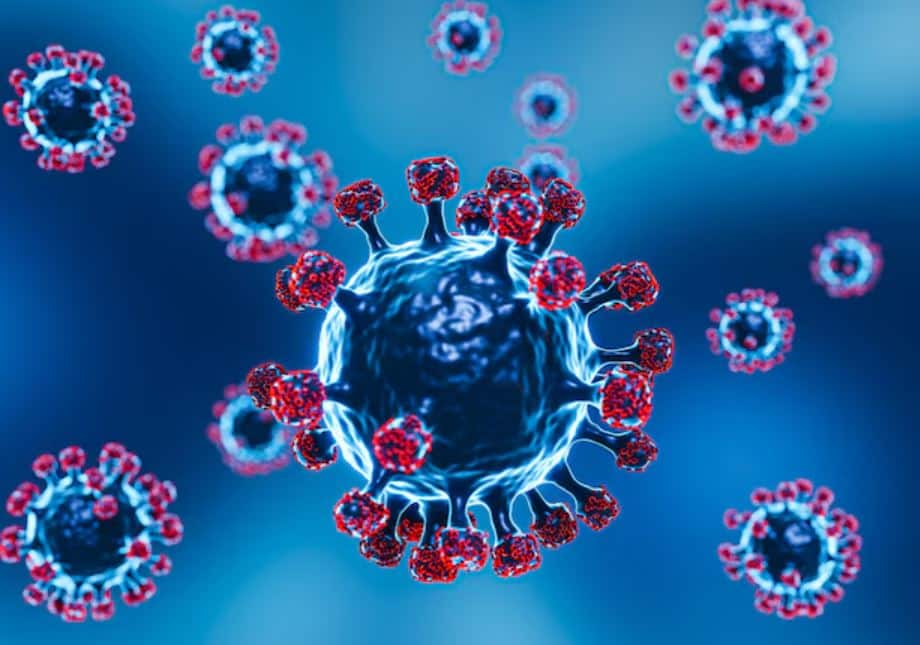India is witnessing a fresh rise in COVID-19 infections, marking a concerning turn in 2025. According to the Health Ministry’s dashboard, active cases have crossed the 1,000 mark nationwide as of May 28. States like Kerala, Maharashtra, and Delhi are seeing a notable uptick in infections, and much of the recent concern centers around emerging subvariants like NB.1.8.1 and LF.7.
While these variants have not yet been categorised as “variants of concern” by the World Health Organization (WHO), they are being actively monitored. The subvariants—though not considered globally dangerous at this stage—are being linked to the rising caseload in parts of Asia, particularly China, and now India. The Indian SARS-CoV-2 Genomics Consortium (INSACOG) recently reported the presence of NB.1.8.1 in Tamil Nadu and LF.7 in Gujarat. However, the most prevalent variant currently circulating in India is JN.1, which accounts for over 53% of all positive cases.
Two Distinct Symptoms Emerging with JN.1
Dr Vishal Khurana, Director of Gastroenterology at Metro Hospital, Faridabad, draws attention to two symptoms of the JN.1 variant that are proving more pronounced than in earlier COVID waves.
1. Gastrointestinal Issues
Dr Vishal explains, “The first is a significant increase in gastrointestinal symptoms. Unlike previous strains, which occasionally affected the digestive system, JN.1 appears to target the gut more aggressively.” He says, “Patients are reporting symptoms such as nausea, reduced appetite, abdominal discomfort, and diarrhea. This suggests a shift in how the virus interacts with the gastrointestinal tract—likely linked to mutations that have changed the virus’s behavior inside the body.”
2. Persistent Low-Grade Fever
“The second key symptom is the prevalence of persistent low-grade fever. Rather than the sudden onset of high fever with chills and body aches that marked early COVID infections, JN.1 presents more subtly. Many individuals feel slightly warm over several days without developing a high temperature. These mild symptoms often go unnoticed or are mistaken for tiredness or overwork, delaying diagnosis and increasing risk of transmission,” says Dr Vishal.
Why Are These Symptoms Different?
“The new symptom profile is believed to stem from genetic alterations in the virus, particularly changes in its spike protein—the part that attaches to human cells. These mutations may influence which parts of the body are affected first and how the immune system reacts,” Dr Vishal explains.
This altered viral behavior is being monitored closely by health authorities worldwide, as it may affect not just symptom expression but also transmission patterns and response to treatments.
What Should You Do If You Experience These Symptoms?
If you feel unwell, even mildly, experts urge you to act quickly and responsibly.
1. Experiencing ongoing fatigue, stomach issues, or mild fever? It’s best not to brush it off. Instead:
2. Get tested for COVID-19, especially if you’ve had recent travel or social exposure.
3. Isolate yourself immediately to protect those around you.
4. Stay hydrated and get plenty of rest to support your immune system.
Dr Vishal says, “Monitor your symptoms closely—seek medical attention if you develop breathlessness, chest pain, or worsening gastrointestinal issues.”
Even if symptoms remain mild, taking these precautions can significantly reduce the risk of spreading the virus to vulnerable populations, such as the elderly or immunocompromised.
Dr Vishal says, “The rising cases are a stark reminder that COVID-19 is far from over, even five years after the first wave. However, this phase is not marked by mass hospitalisations or emergency lockdowns—but rather by greater awareness and individual responsibility.”
Vaccination, timely testing, and careful monitoring remain our strongest defenses. The government continues to encourage booster shots, particularly for high-risk groups. Masking in crowded places, maintaining hygiene, and staying home when unwell are simple yet effective habits that can help curb further spread.
How COVID Symptoms Have Evolved in 2025?
The nature of COVID-19 continues to evolve as the virus mutates. While many of the classic symptoms remain, the dominant JN.1 variant has introduced some subtle yet unique changes in symptom presentation. In general, symptoms reported in 2025 are mild, often making them harder to detect and more likely to be confused with common cold, seasonal allergies, or general fatigue.
According to recent WHO reports, NB.1.8.1 and other related subvariants are not yet associated with severe illness or hospitalisations in most patients. However, this does not make them harmless especially when symptoms go unrecognised and people continue regular social interaction, unknowingly spreading the infection.
Above all, listening to your body and not ignoring subtle symptoms like digestive discomfort or a lingering low fever could be crucial in detecting the virus early. The pandemic has entered a new chapter one that relies heavily on community vigilance and personal health literacy.
